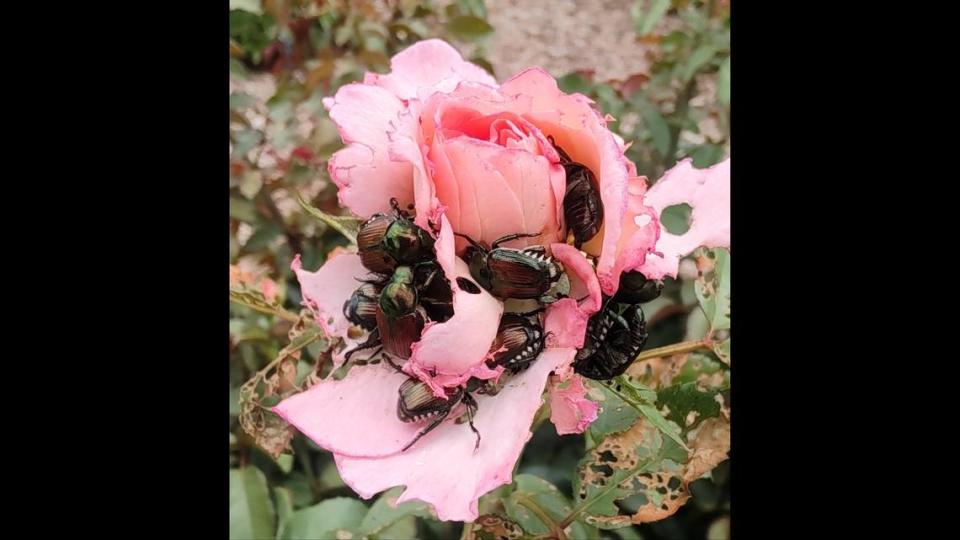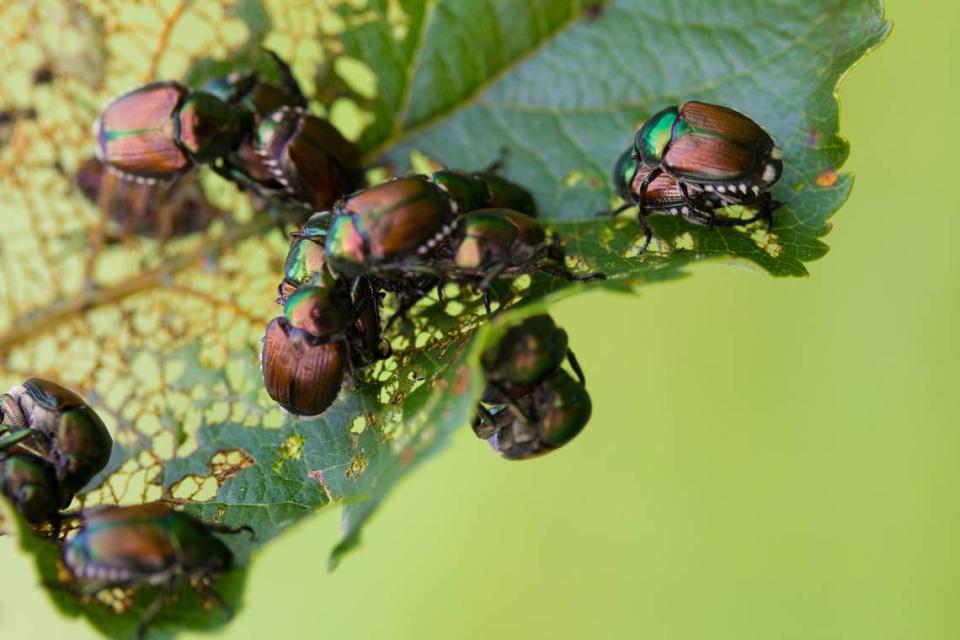Japanese beetles destroying your SC garden, landscaping? Here’s what to do — and not to do
You name it, this creature will eat it.
Roses, ornamental trees, flower beds, orchards, vineyards, vegetable gardens, all a feast for Japanese beetles.
Like cicadas, Japanese beetles live most of their lives underground. Their life cycle begins when adults lay eggs in the dirt in mid-summer. Grubs feed on roots and by the following spring they are about an inch long and come out of the ground to begin munching on your carefully tended landscape and some not so carefully tended foliage.
Also like cicadas, they live above ground for about six weeks each summer.
It’s all or nothing for these — actually pretty — metallic green and gold beetles. When they’re done, plants look like they are nearly dead, said Dave Coyle, Clemson University professor who studies forest health and invasive species.
Clemson has a photo on its extension service website showing a good-sized buckeye with about half its leaves eaten and brown.
They came to America on the roots of nursery stock, possibly irises, shipped from Japan for the 1916 World’s Fair. In Japan, there were plenty of natural enemies to keep the insect under control. In America, not so much, although some birds such as robins, cat birds and cardinals will eat them. Also domestic chickens but if you bring them in for your chickens, you’re likely to create more problems as the invasive horde chows down on your landscaping.
Opossums, raccoons, skunks, moles and shrews will eat the grubs, and again more trouble. Those animals are going to dig up your lawn.
Japanese beetles fly during the day and can travel up to half a mile at a time.
Over the last century they have spread to states in the East and Midwest — they don’t like arid climate or, for some reason, Florida — and are considered a serious plant and agricultural pest.
The Old Farmer’s Almanac says they were first found in a nursery near Riverton, New Jersey, and within four years, eradication programs ended. The beetles won.
Year to year, the number of Japanese beetles fluctuates, Coyle said.
“This is likely due to weather patterns as well as a fungus that can kill some of the grubs while they’re underground,” he wrote in an article for the Clemson Extension Service website.
What to do? Seems Herculean. They attack plants in groups, The Almanac says.
Use BTG. Products such as grubGONE! Kills them before they hatch. It uses naturally-occurring soil bacteria to target Japanese Beetle grubs and other pests. The Farmer’s Almanac says it’s as effective as a chemical pesticide and is not toxic to beneficial insects, people or pets. You can also use it as a spray on plants.
Pick them off by hand. This has to be done every day, if not twice a day. Put them in soapy water to kill them.
Install a mesh layer. Not on fruit trees or anything that requires pollination.
Buy a Japanese beetle trap. Some pest control operators suggest this but Coyle said, “research shows that they tend to attract more beetles than they capture.” Not recommended.
Plant companion plants. Garlic, rue, or tansy will keep Japanese beetles away. Also, scented geraniums feverfew, parsley, thyme, salvia, lavender, yarrow, oregano and catmint. The Almanac says, “Four-o’clocks (Mirabilis) and larkspur (Delphinium) are said to act as decoys by attracting rose-loving Japanese beetles to eat their poisonous leaves, but they do not kill the beetles.”
Insecticide. Coyle said this is the most effective way to control both adults and larvae. Adults can be controlled with formulations containing imidacloprid, dinotefuran, or several other chemicals that can be found at feed and seed and other landscape-related stores.
But as with all chemical products, be careful you don’t kill something beneficial trying to rid yourself of a temporary pest.



